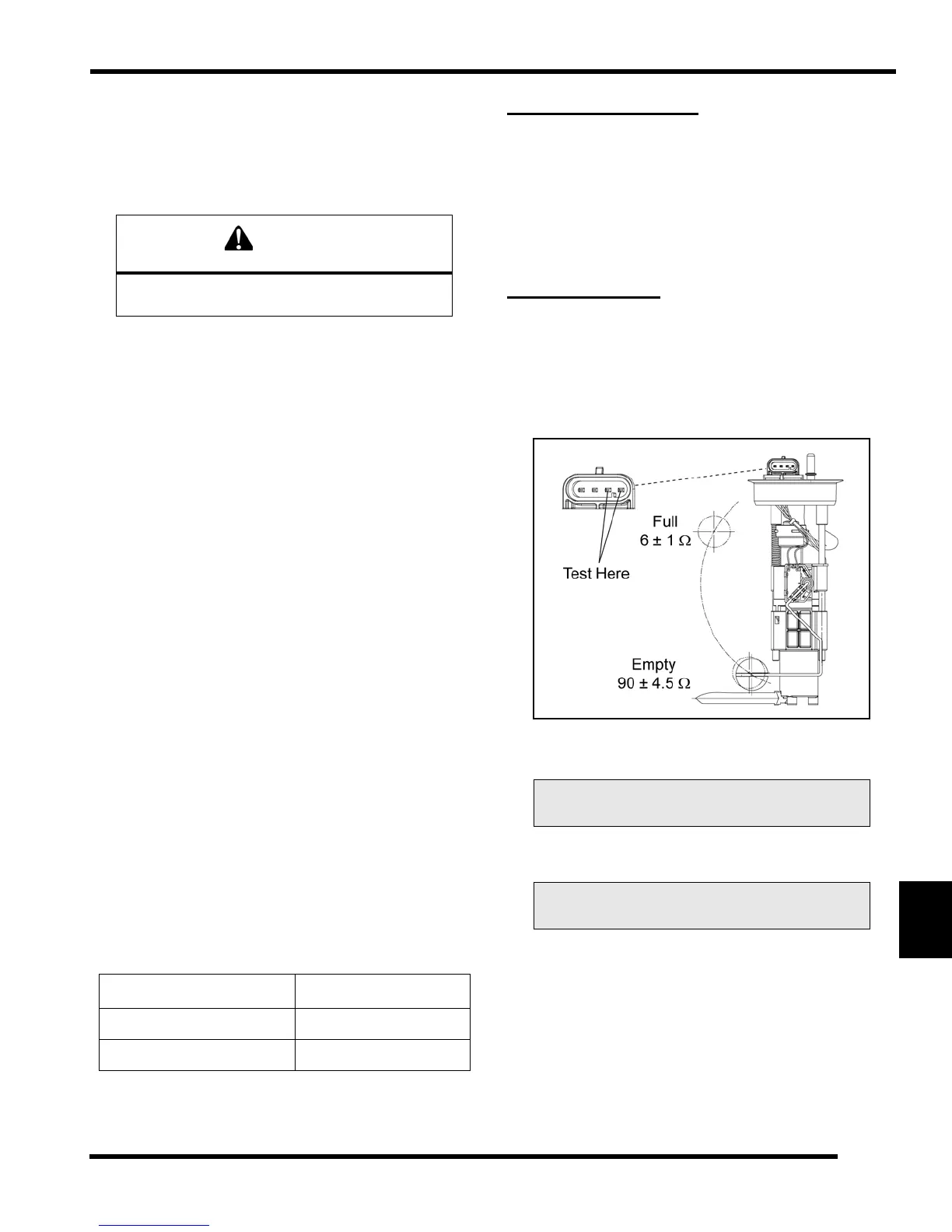10.23
ELECTRICAL
10
9924096 - 2013 RANGER RZR XP 900 / RZR XP 4 900 Service Manual
© Copyright 2012 Polaris Sales Inc.
Fan Control Circuit Operation / Testing
Power is supplied to the fan via the Orange/Black wire
when the relay is ON. The ground path for the fan motor
is through the Brown harness wire. Refer to “RELAYS”
later in this chapter for more information on fan functions.
NOTE: The fan may not function or operation may
be delayed if coolant level is low or if air is trapped in
the cooling system. Be sure cooling system is full
and purged of air.
Fan Control Circuit Bypass Test
1. Disconnect harness from coolant temperature sensor
on the engine cylinder head (see Chapter 4).
2. With the transmission in Park, start the engine. After
a few seconds, the fan should start running and the
“Check Engine” indicator should display on the
instrument cluster. This indicates all other
components are working properly.
3. If the fan does not run or runs slowly, check the fan
motor wiring, ground, motor condition, circuit breaker
and mechanical relay for proper operation. Repair or
replace as necessary. If the fan runs with the sensor
harness disconnected, but will not turn on when the
engine is hot, check the coolant temperature sensor
and connector terminals.
Coolant Temperature Sensor
The coolant temperature sensor can be tested using an
ohmmeter or voltmeter.
1. With the engine and temperature sensor at room
temperature (68
F = 20C), disconnect the harness.
2. With the meter in the ohms mode, place the meter
leads onto the sensor contacts.
3. Use the table Temperature / Resistance table to
determine if the sensor needs to be replaced.
NOTE: If the coolant temperature sensor or circuit
malfunctions the radiator fan will default to 'ON'
while the engine is running.
EFI DIAGNOSTICS
EFI Component Testing
All EFI component information and diagnostic testing
procedures are located in Chapter 4.
Refer to Chapter 4 “Electronic Fuel Injection System (EFI)”
when diagnosing an EFI system or component.
FUEL SENDER
Testing
1. Remove the fuel pump assembly from the fuel tank
(see Chapter 4 “Fuel Pump Replacement”).
2. Using an Ohm meter, measure the resistance of the
fuel sender as shown below.
3. Allow the sender float to sit in the empty position and
compare to specification.
4. Slowly move the sender float to the full position and
compare to specification.
5. If the readings are out of specification, or if the reading
is erratic or LCD display “sticks”, check the following
before replacing the fuel pump assembly:
• Loose float
• Float contact with tank
• Bent float rod
6. If none of the conditions exist, the fuel sender
assembly is faulty. Replace the fuel pump assembly
(see Chapter 4).
Keep hands away from fan blades during
operation. Serious personal injury could result.
Temperature °F (°C) Resistance
68 °F (20 °C) 2.5 k ± 6%
212 °F (100 °C) 186 ± 2%
Fuel Sender - Empty: 90 ± 4.5
Fuel Sender - Full: 6 ± 1

